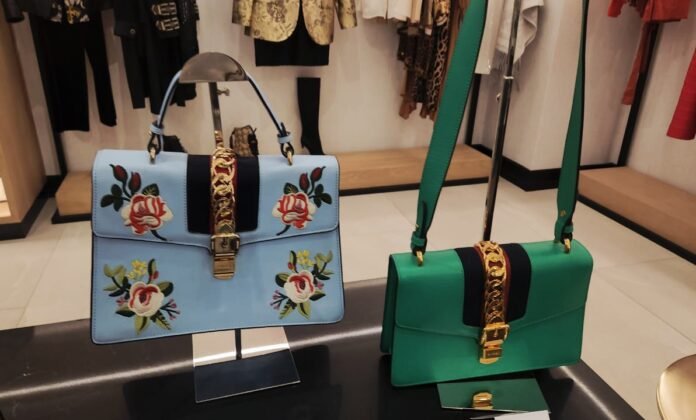South Africa leads the continent’s luxury market, a status that brings with it a formidable challenge: a rampant counterfeit industry. For consumers and brands alike, distinguishing the authentic from the expertly replicated has become a high-stakes dilemma.
In this ongoing battle, a powerful alliance is emerging: the unerring precision of Artificial Intelligence (AI) and the invaluable, nuanced intelligence of human experts.
The scale of the problem is vast. As the 7th State of Africa’s Luxury Market Report shows, South Africa’s position as a luxury hub makes it a prime target for counterfeiters. This threatens not just brand revenues but consumer trust and the very integrity of the market. Recently, the South African Police Service seized fake goods worth more than R156 million, highlighting the depth of illicit activity.
For years, the burden of detection fell solely on trained human eyes, a painstaking process that is increasingly impossible to scale against the digital torrent of fakes.
AI: the first line of defense
Enter AI. Brands are now turning to machine learning algorithms to analyse thousands of data points—from the microscopic pores in leather to the subtlest variations in stitching—with a speed and accuracy impossible for humans. As Fashion ABC notes, luxury’s fight against fakes is leveraging “AI’s ability to spot patterns indiscernible to humans.”
Global houses are racing ahead:
- LVMH’s Patou has rolled out an AI-powered authentication system that generates a microscopic “fingerprint” of each product from up to 5,000 identifying elements in a photo—delivering instant verification with 99.9% accuracy.
- Burberry uses AI image recognition to examine weaving and texture with reported 98% accuracy.
- Deloitte’s ‘Dupe Killers’, used by brands like Jimmy Choo, sweeps the internet for fakes using product-specific machine learning models.
- Companies such as Entrupy and MarqVision now provide scalable AI authentication solutions for global marketplaces.
In South Africa, the numbers are equally telling. Luxity, the country’s premier luxury reseller, reported that AI flagged 203 suspected fakes in a single month—yet human authenticators still identified another 91 counterfeits during final checks. “That means roughly one in three high-quality replicas slip past AI’s first screening,” says CEO Svetoslav Zahariev.
Why human expertise still wins
For Zahariev, this underscores a fundamental truth: “AI is a powerful tool for scanning vast digital marketplaces and flagging potential fakes based on data patterns. It excels at the macro, quantitative analysis. But luxury authentication is both a science and an art.”
He adds:
“The feel of leather that has been tanned a specific way, the exact weight and sound of a zipper pull, the way the glazing on a handbag edge feels to the touch, even the unique scent of materials from a specific house—these are sensory details that, for now, only a trained human expert can comprehensively process and interpret.”
This synergy is crucial. AI handles the data-heavy lifting—scanning thousands of listings or analyzing macro-level trends—while human experts focus on the most sophisticated cases. At Luxity, their rigorous multi-point authentication process, particularly for coveted pieces like Louis Vuitton handbags, serves as the ultimate line of defense.
“AI is a fantastic first line of defense,” Zahariev explains. “It can narrow the field dramatically. But the final call, the guarantee of authenticity that we stake our reputation on, comes from our experts. That human intelligence is, and will remain, invaluable.”
The arms race against counterfeiters
The counterfeit market, estimated by the OECD to be worth over $500 billion, is constantly evolving. Today’s “superfakes” even mimic authentic serial numbers, date codes, and artificially aged materials. Worse, AI can produce false positives, mistakenly flagging authentic vintage pieces due to limited training data.
Yet Zahariev remains optimistic: “The technology keeps getting smarter, which is great for the industry. The more people who can spot fakes, the harder it becomes for counterfeiters to operate.”
For South African consumers, however, the stakes are personal. Almost 90% of shoppers worry about authenticity when buying pre-owned luxury online, but many unknowingly rely on generic AI verdicts.
“When you’re spending serious money on a luxury purchase, proper verification is not optional,” warns Zahariev. “Superfakes are getting better, and so must the tools and processes we use to fight them. AI is a powerful ally, but it’s not yet a silver bullet.”
Protecting SA’s luxury identity
Ultimately, the future of authentication in South Africa is not a binary choice between man and machine. It is a partnership—where AI’s relentless scalability works in tandem with human instinct, creativity, and craftsmanship. This balance safeguards not only brand integrity but also the very essence of luxury itself.
ALSO READ: 21-year-old South African setting the bar high in luxury fashion

